Understanding Hydrofoil Prices in Kiteboarding

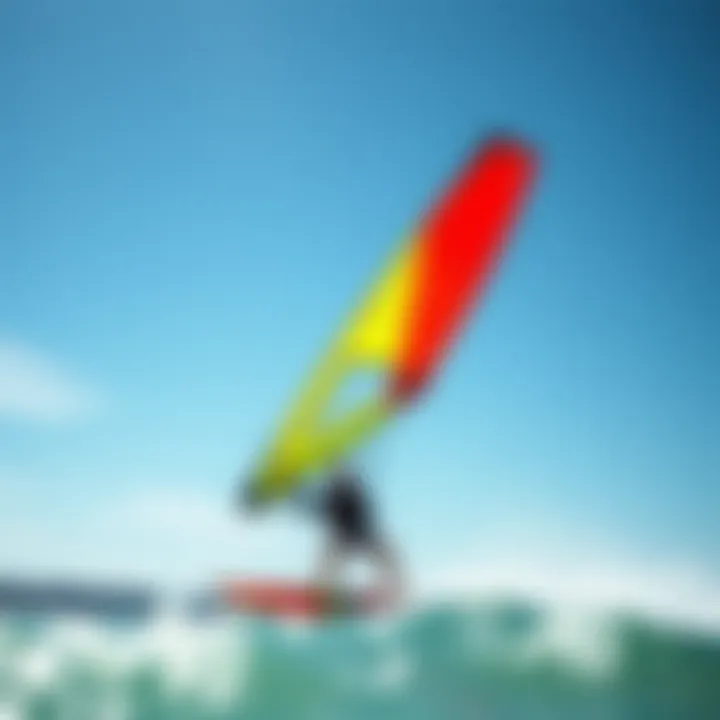
Intro
In the vibrant world of kiteboarding, the rise of hydrofoils has transformed the experience on the water. Riders are ushered into a realm where they glide effortlessly above the waves, propelled by the wind and the precision of their gear. Understanding the financial implications tied to hydrofoil equipment is crucial for both newcomers and seasoned veterans alike. Prices can swing wildly based on various factors including design, material used, and technological advancements.
As the kiteboarding industry gravitates towards these innovative products, it’s essential to unpack what determines the costs associated with hydrofoils. By delving deeper into market trends, evolving technology, and the intricate anatomy of hydrofoil systems, potential buyers can better align their choices with their personal ambitions and budgets.
To navigate these waters effectively, this piece will dissect the pivotal elements that influence hydrofoil prices, ensure informed decision-making, and ultimately empower kitesurfers to embrace their passion with the right gear. We'll articulate the significance of gear selection and skill development in relation to the investment you're about to make, setting the stage for a comprehensive understanding of hydrofoil pricing.
Prelims to Hydrofoils
Understanding hydrofoils is paramount for anyone engaged in kiteboarding. These specialized boards enhance performance by allowing riders to glide above the water's surface, reducing drag and increasing speed. Knowledge about hydrofoils is essential not only for selection purposes but also to appreciate the engineering behind them.
These boards have transformed the kiteboarding experience, and their growing popularity has ushered in a myriad of options that cater to diverse skill levels and preferences. With the increase in available products, knowing how to discern between models, brands, and features becomes crucial for both enthusiasts and competitive riders alike. It’s like stepping into a new world where every detail can make a notable difference in your ride.
Definition and Functionality
A hydrofoil consists of a wing-like structure and a mast, which connects to a board. When a kiteboarder gains enough speed, the hydrofoil lifts the board out of the water, enabling the rider to experience a smoother ride with less resistance. The primary function of a hydrofoil is to improve hydrodynamics—this means less energy is wasted, which translates to better speed and greater efficiency.
In simpler terms, when you're up on a hydrofoil, you're flying, not just riding. Riders often describe it as an exhilarating feeling, almost like floating on air. The science behind it is crucial, as understanding how a hydrofoil achieves lift can help users grasp how to maneuver and optimize performance during their sessions. The culmination of precision engineering and practical function has made hydrofoils an essential tool in kiteboarding.
History of Hydrofoiling
The evolution of hydrofoiling has roots that reach back farther than most might think. The concept emerged in the early 1900s, with the first hydrofoil boat designed by Italian inventor Enrico Forlanini. Over the decades, various adaptations emerged, but it wasn't until the late 20th century that hydrofoils began to gain traction within the kiteboarding community.
Initially, kiteboarding enthusiasts looked to adapt technology used in other water sports, such as sailing and windsurfing. As kiteboarding evolved, so did the designs of hydrofoils. The early models were often considered cumbersome and difficult to ride, limiting their accessibility.
However, as materials improved and designs became more user-friendly, hydrofoiling flourished. By the early 2000s, they started to become more mainstream, with various brands racing to innovate. Today, hydrofoil boards continue to evolve, reflecting advances in technology and design, enhancing the overall riding experience.
The historical context is important—it shows not just how far we’ve come, but also sets the stage for understanding how hydrofoils fit into today’s kiteboarding market.
Hydrofoil Pricing Overview
Hydrofoil pricing plays a pivotal role in the kiteboarding landscape, bridging the gap between various gear options and performance expectations. Prices not only reflect the mechanical intricacies and material composition of hydrofoils but also influence consumer decisions based on individual needs and financial comfort. Understanding hydrofoil prices is essential for novice and seasoned kiteboarders alike. Investors in this market must assess the value they receive for their expenditure.
When considering hydrofoils, it’s imperative to evaluate not only the sticker price but also the benefits that come with different price points. Budget-friendly models can be tempting, yet they often compromise on durability and performance. Conversely, higher-end options typically cater to advanced users who need precision and efficiency on the water.
Evaluating hydrofoil pricing can empower buyers to make informed decisions that align with their kiteboarding style and long-term aspirations in the sport. As we dive deeper, we’ll elucidate the general price ranges and provide a nuanced comparison with traditional boards, both of which are essential considerations for those venturing into hydrofoiling.
General Price Ranges
When you step into the world of hydrofoils, you’ll soon find a diverse range of prices that vary significantly based on quality and innovation. On the lower end, beginner hydrofoils start around $600, offering basic construction suitable for those just learning the ropes. However, don’t be fooled; even at this price, some brands can provide a decent experience for newcomers.
As we move up the ladder, intermediate models will typically set you back between $800 and $1200. These options often incorporate better materials and design principles, paving the way for smoother rides and enhanced stability.
The premium market caters to experts, where prices can soar from $1500 all the way to $3000 or more. These high-end hydrofoils boast cutting-edge technology, extensive testing, and high-grade materials, crucial for professionals or those serious about their kiteboarding journey.
"Understanding price ranges can truly bridge the gap between desire and investment in hydrofoiling."
Comparison with Traditional Boards
In the traditional kiteboarding world, the price of regular boards typically ranges from $400 to $1200. Comparing this to hydrofoiling highlights a notable premium attached to foil technology. This difference may raise questions: why the disparity? One major reason is the complex engineering involved in the design and construction of hydrofoils.
Unlike traditional boards that primarily serve as a platform for standing and riding, hydrofoils rely on well-crafted wings and fuselage systems to lift the rider out of the water. This necessitates precision machining and advanced materials, driving up production costs.
To further illustrate:
- Material Quality: Hydrofoils often use lighter, more durable materials compared to traditional boards.
- Complexity of Design: The engineering required for safe and effective hydro bubbling through the water is inherently more complex than that of flat boards.
Ultimately, while both types serve the same purpose—crossing the water swiftly—hydrofoils deliver a unique experience that traditional boards cannot match. Kiteboarders need to weigh this difference carefully when making a purchase.
By delving into the pricing mechanisms and comparing it with conventional boards, potential buyers stand to gain a clearer picture of where their money goes, helping to strategize a purchase that meets both their performance desires and budget constraints.
Factors Influencing Hydrofoil Prices
Understanding the factors that influence hydrofoil prices is essential for anyone looking to invest in this fascinating aspect of kiteboarding. Choices in materials, the strength of a brand's reputation, and the level of design and innovation tied to a hydrofoil can all dictate how much one might pay. Before making a purchase, it’s wise to consider these elements, as they can drastically affect both performance and long-term satisfaction.
Material Quality
Material quality stands as a prominent factor in determining hydrofoil pricing. The materials used in constructing hydrofoils can range from entry-level options made of aluminum to high-performance variants made from carbon fiber. Each material presents its own set of benefits and drawbacks.
- Durability: Carbon fiber tends to be more rigid, offering enhanced performance at a higher price point. However, newcomers might find themselves opting for an aluminum frame, which balances quality and affordability.
- Weight: Light materials reduce drag and enhance maneuverability. Thus, lighter materials often come with a heftier price tag, appealing to enthusiasts who want that competitive edge.
- Technology Integration: Some hydrofoils utilize cutting-edge materials that can absorb vibrations or enhance aerodynamics. These can be pricier but might provide a significant advantage for serious riders.

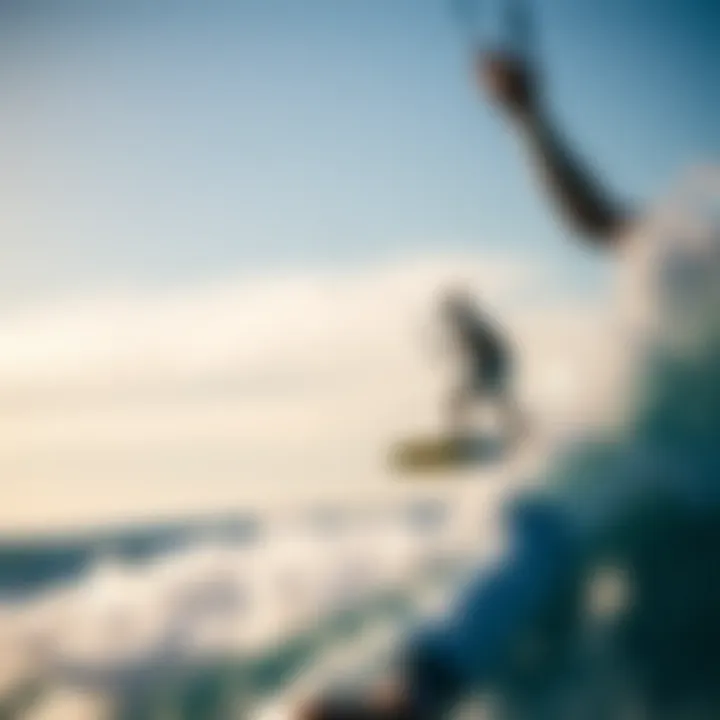
Thoughtful consideration of what materials align with one's kitesurfing style can guide buyers towards making a purchase that pays off in the long run.
Brand Reputation
Brand reputation also plays a critical role in the pricing landscape of hydrofoils. More established brands often demand higher prices, attributing this to stronger customer support, warranties, and proven performance.
- Trust and Reliability: Renowned brands like Naish and Slingshot have built trust over the years, leading to consistent performance and protection against defects. This can justify their premium pricing.
- Community Feedback: In the kiteboarding community, word-of-mouth and reviews on platforms like Reddit or Facebook can greatly influence brand perception. A well-reviewed product can reassure potential buyers of its quality and reliability.
- Innovation and Legacy: Brands that push for innovation often feature the latest technology, thus commanding higher prices. Historical significance, too, plays a part; a brand that pioneered hydrofoiling will have strong marketability.
Recognizing how much a brand's reputation factors into a product's cost helps buyers weigh the benefits against their budgetary constraints.
Design and Innovation
Design and innovation carve out another layer of pricing intricacies. The cutting-edge designs seen in modern hydrofoils often reflect extensive research and development efforts.
- Aerodynamics and Shape: More recent designs incorporate tweaks that minimize drag, allowing for faster rides. Your typical, older models may lack these advancements and sit firmly at a lower price point.
- Customization Options: Some brands offer customizable hydrofoils, where riders can tweak designs based on their unique riding styles. This personalized touch tends to come at an additional cost and may cater to a more specialized market.
- User-Focused Innovation: Companies that invest in user experiences, like easy assembly and disassembly or unique features for user-friendliness, often create better products, leading to higher prices. A system that simplifies setup can be worth its weight in gold, especially on a wind-tossed beach.
Taking the time to understand the balance between design, innovation, and cost can guide kiteboarders toward an option that not only fits their budget but also aligns with performance expectations.
In summary, material quality, brand reputation, and design innovation each contribute significantly to hydrofoil prices. Assessing these factors can lead to smarter purchasing choices, ensuring riders receive the best value for their investment.
Hydrofoil Components and Their Costs
Understanding the costs associated with hydrofoils goes beyond just numbers; it involves digging into the components that make up these sophisticated pieces of equipment. Each part plays a pivotal role in performance and functionality, often justifying its price tag. By dissecting the components, kiteboarders can better appreciate what they are investing in, allowing for informed choices that align with their kiteboarding style and preferences.
Foil Structure
The foil structure is the backbone of any hydrofoil system. It consists of various parts, each contributing to the performance and handling of the kiteboard on water. A quality foil structure can significantly enhance the rider's experience, whether they are carving through waves or gliding smoothly across flat water.
Wing Set
The wing set typically includes the front and rear wings, which are crucial for lift and stability. The design and size of these wings determine how well the hydrofoil performs. For instance, larger wings provide more lift at lower speeds, making them a favorable option for beginners. This key characteristic can be the difference between a smooth ride and a struggle to stay airborne.
One unique feature of wing sets is their adaptability; riders often have the option to swap out wings to suit their changing skills or conditions. However, larger wings can be cumbersome in high winds, turning the tides against even seasoned riders. Therefore, while a larger wing set might appeal for its ease of use, those seeking speed and agility may find slender wings advantageous in certain conditions.
Fuselage
The fuselage connects the wings to the mast and is critical for overall balance. Its length and width can affect turning radius and stability during high-speed maneuvers. A longer fuselage often translates to better straight-line performance, which might attract those who enjoy speed, while a shorter one could enhance agility, appealing to freestyle kiteboarders.
The choice of materials also factors into fuselage costs. Carbon fiber options might cut weight but can inflate prices significantly compared to aluminum models. So, while a lightweight fuselage sounds appealing, one must weigh that against the budget; durability plays a significant role here too.
Mast
The mast serves as a vertical connection between the foil and the board; its height can vary significantly. Longer masts provide a greater distance between the board and the water, allowing the rider to tackle rough conditions with ease. However, this distance can lead to a higher center of gravity, making balance trickier, especially for those just starting out.
Masts can be made from various materials, including aluminum and carbon fiber. Carbon masts are often lighter, enabling smoother control, yet they tend to come at a premium price. The right choice hinges on personal priorities—cost versus lightweight agility, versus the experience level.
Board Integration
Integrating the hydrofoil into the board is another consideration that impacts cost. Boards designed explicitly for hydrofoils feature unique mounting systems that facilitate smooth attachment and detachment. Boards that are versatile enough to be paired with regular fins as well as foils can provide added flexibility for riders exploring different styles. However, dedicated hydrofoil boards generally come with a heftier price tag due to their specific design.
Accessories and Additional Gear
Accessories play a crucial role in maintaining your hydrofoil setup and ensuring a safe ride. Investing in quality accessories can elevate the overall experience and protect the investment of a hydrofoil.
Foil Bag
One important accessory is the foil bag, crafted specifically to house the delicate components of the hydrofoil. These bags shield the foil from physical damage during transport and storage. A well-padded foil bag can prevent scratches and bends that would otherwise compromise performance.
Additionally, a good foil bag often includes compartments designed for individual pieces like the wings and mast, preventing accidental knocking against each other. The downside? High-quality bags often come at a cost, but for those serious about maintaining their gear, it’s a worthy investment.
Protection Equipment
Protection equipment—think of helmets, impact vests, and knee pads—serves a dual purpose. Not only does it increase safety during sessions, but it also provides peace of mind while you push your limits. The investment in protection gear may appear superfluous to some, but it’s an undeniable part of kiteboarding that can make or break your days on the water.
The variety of available protection gear caters to diverse preferences, from minimalistic designs that allow maximum flexibility to heavily padded options for those tackling more aggressive kiteboarding styles. When factoring in costs, consider that the price of injury can outweigh the upfront expense of quality protection.
End
When looking at hydrofoil prices, understanding the components and their associated costs provides valuable insight into the investment. By comprehensively exploring each element, kiteboarders can identify what suits their style and budget. Thus, be it the wing set, fuselage, mast, or essential accessories, each component serves a purpose that contributes to the overall kiteboarding experience.
Market Trends and Hydrofoil Pricing
Examining market trends in hydrofoil pricing provides crucial insights for kiteboarders, manufacturers, and enthusiasts alike. Understanding these trends can illuminate the path forward, revealing where the industry is headed and how pricing strategies are adapting in response to consumer demand. By keeping a close eye on emerging patterns, one can navigate the complex waters of hydrofoil investment more effectively.
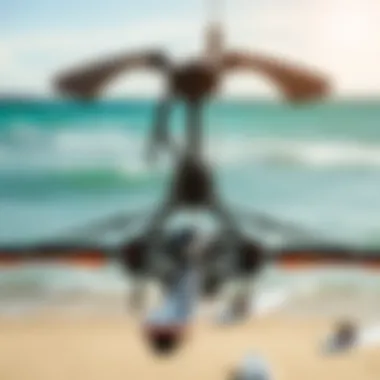
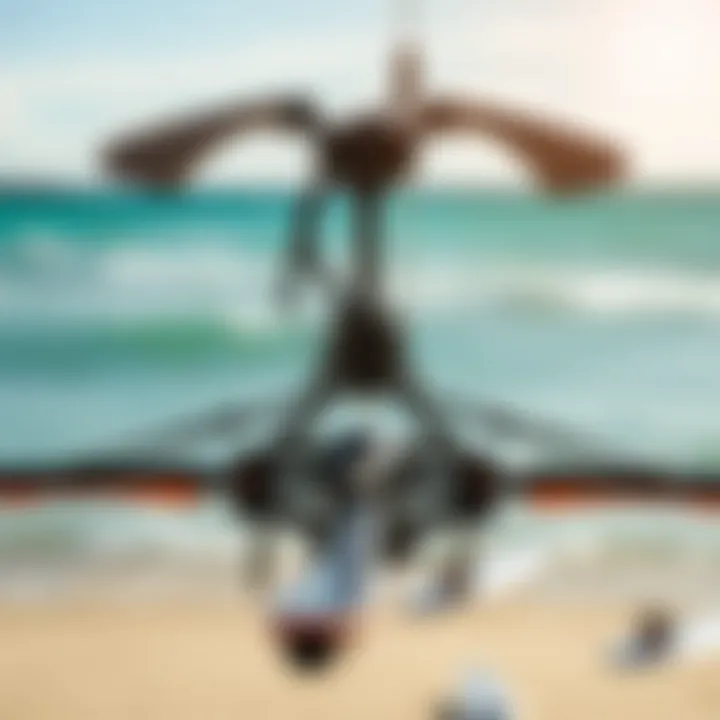
The importance of this topic cannot be overstated. Kiteboarding, as a sport, is continually evolving, and hydrofoil technology has become a game-changer. This segment sheds light on how these trends impact pricing models, ensuring kiteboarders can make smart, informed choices when it comes to equipment purchases.
Key elements to consider in this evolving landscape include:
- Shifts in Consumer Preferences: As kiteboarding techniques advance, preferences shift. Kiteboarders are leaning towards hydrofoils due to their ability to ride in lighter winds. This increase in demand can drive prices higher.
- Technology Advancements: New manufacturing processes and materials can affect cost and quality. Companies that adopt innovative techniques may set higher prices based on enhanced performance and durability.
- Competitive Marketplace: The proliferation of new brands has led to competitive pricing strategies, which can benefit consumers as companies strive to differentiate themselves from one another.
Emerging Brands and Their Pricing Strategies
In recent years, the kiteboarding scene has seen a surge of newer brands entering the hydrofoil market. Companies like Airush, Slingshot, and Duotone have diversified their offerings, but there’s also a wave of fresh-faced startups trying to carve out their niche. These firms often adopt pricing strategies that reflect their brand positioning and target audience.
Emerging brands frequently employ aggressive pricing tactics to capture market share. Based on trends, here are a few common strategies:
- Introductory Pricing: Many new brands start with lower price points to entice early adopters and build a customer base. This can lead to a temporary influx of sales, although long-term sustainability is vital for these companies.
- Value Proposition: New entrants may highlight unique features or benefits that justify their price, employing narratives about superior design or performance that resonate with kiteboarders looking for the next best thing.
- Community Engagement: Some brands rely on building a community around their product, often leveraging social media platforms like Instagram or Reddit to engage with potential users, thereby creating a sense of brand loyalty that can justify higher prices later on.
Navigating through these emerging brands can be complex, however, carefully assessing their pricing strategies can lead to lucrative buying decisions.
Historical Price Adjustments
To understand today’s hydrofoil pricing, one must look back at the evolution of costs over the years. Historical price adjustments reflect shifts in technology, material costs, and market demand. For instance, when hydrofoils first hit the scene, their prices tended to be sky-high. As more brands entered the fray and manufacturing improved, prices began to stabilize.
Several factors have contributed to historical price adjustments in hydrofoils:
- Technological Evolution: As technology advanced and mass production became the norm, manufacturers were able to produce high-quality hydrofoils at a fraction of the original costs. This was a win-win for buyers.
- Economic Factors: Fluctuations in raw material costs directly affect manufactuer pricing. A surge in demand for carbon fiber, for instance, can mean increased costs for consumers.
- Market Saturation: An increase in competition often leads to price drops as brands vie for consumer attention. The rich array of options available now means that kiteboarders can find solutions that suit their budgets more closely than ever before.
Ultimately, understanding these price adjustments not only helps potential buyers anticipate costs but also enables them to assess the value of their investment over time.
"A wise kiteboarder learns from both the past and the present, using insights to navigate the waters of investment most effectively."
For those looking to dive deeper into the complexities of hydrofoil pricing, external resources are a valuable tool. For additional information on related economic impacts, you might want to visit Wikipedia, or to engage in discussions, sites like Reddit offer community perspectives.
Evaluating Value for Money
When it comes to purchasing a hydrofoil for kiteboarding, understanding the concept of value for money is crucial. Kiteboarders should not only look at the price tag but also consider what the investment delivers in terms of performance and longevity. Additionally, many factors interplay here, making it essential to evaluate various aspects to ensure that one's hard-earned cash is well spent.
Performance Metrics
Performance metrics refer to the specific characteristics that enable a hydrofoil to perform well under various conditions. These features can include speed, maneuverability, and stability. For example, a well-designed hydrofoil can cut through the water like a hot knife through butter, offering minimal drag and enhanced lift. Here are some performance metrics to keep in mind:
- Lift Efficiency: A hydrofoil's ability to rise above the water surface reduces drag significantly, allowing for faster speeds. Higher lift coefficients indicate better performance in varied wind conditions.
- Speed Potential: Different hydrofoil configurations can either maximize speed or enhance stability. Riders looking for thrills may prefer designs that prioritize speed.
- Maneuverability: Some designs highlight quick turning and navigation, essential for tricks and tight rides. It's crucial to select a hydrofoil that complements the riding style intended.
By prioritizing these metrics, buyers can ensure that their investment will yield not just an average experience but rather an entertaining and fulfilling ride whenever they hit the water.
Durability and Longevity
Durability and longevity are interlinked with performance metrics, yet they introduce another layer of consideration for potential hydrofoil buyers. A hydrofoil might deliver exceptional performance on the water, but if it falls apart after a few sessions, that creates a big problem. Therefore, assessing the materials used and the overall build quality is essential.
Several factors contribute to a hydrofoil’s durability:
- Material Composition: Most premium hydrofoils use materials like carbon fiber, which are both lightweight and strong. This construction maximizes performance and extends the life of the foil, though they usually come with a higher price.
- Maintenance Requirements: Hydrofoils that require extensive maintenance may end up costing more in the long run. Buyers should consider how easy it is to clean and protect the hydrofoil from wear and tear.
- Warranty and Support: A solid warranty can speak volumes about the manufacturer’s confidence in their product. A longer warranty often indicates that the company expects their foil to last under numerous conditions.
Evaluating the durability and longevity metric is equally as important as assessing performance. In this way, kiteboarders can rest assured that their investment isn’t just fleeting but rather something that will stand the test of time.
Resources for Further Reading
- Kiteboarding resources on Wikipedia
- Kiteboarder community discussions on Reddit
- Industry insights on Kiteboarding at Britannica
Purchasing Considerations
When diving into the world of hydrofoil pricing, several factors come into play that can heavily influence not just the price point, but also the overall experience once you’re out on the water. These purchasing considerations take into account various aspects such as the condition of the equipment, the method of purchase, and how they align with your specific needs and preferences. Understanding these can help kiteboarders, both novices and veterans, navigate their investment in hydrofoils with more confidence and insight.
New vs. Used Hydrofoils
Purchasing a hydrofoil is a considerable investment, so deciding between new and used equipment is crucial.
New Hydrofoils
Buying a new hydrofoil typically offers advantages like:
- Cutting-edge technology
- Warranty and customer support
- Guaranteed condition and performance
- The latest designs tailored for specific riding styles
For those who prioritize performance and reliability, new hydrofoils often provide better value. Brands like Naish, Slingshot, and Duotone frequently release innovations that can enhance your ride. However, this comes with the cost; new hydrofoils can run into the thousands, potentially pushing budgets to their limits.
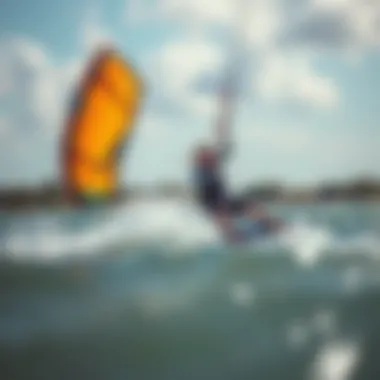
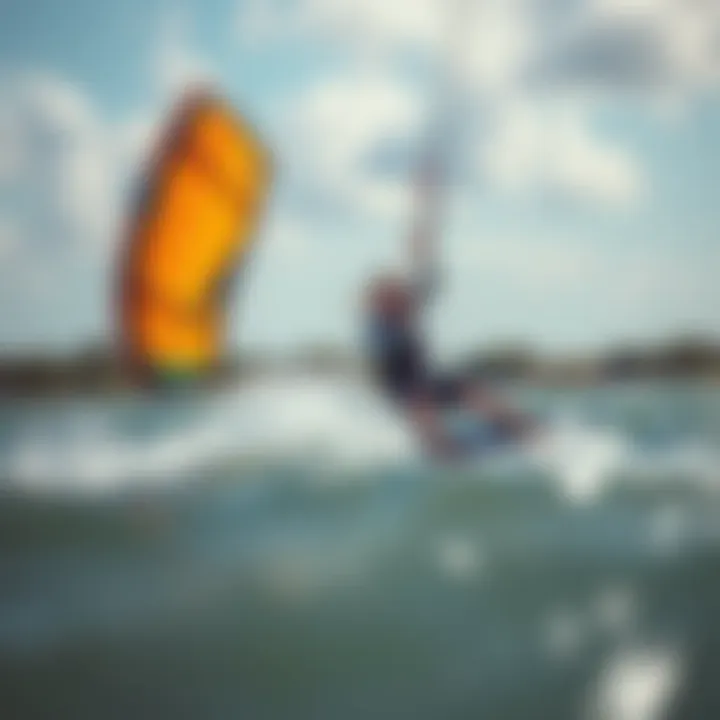
Used Hydrofoils
On the flip side, the second-hand market offers significant savings. Many kiteboarders offload their gear after a season or two, presenting an opportunity to find quality hydrofoils at a bargain. Here’s what to keep in mind when buying used:
- Check for signs of wear and tear
- Inquire about any previous repairs
- Assess the foil's compatibility with your kite setup
Buying used can be an excellent way to enter the hydrofoiling world without breaking the bank. However, caution is prudent. It’s wise to seek out boards that have been well-maintained, as neglect could result in disappointing performance.
Online vs. In-Store Purchases
Another important consideration is the method of purchase. With the rise of online shopping, kiteboarders now face the choice between buying locally or clicking away from their couch.
Online Purchases
Shopping online generally means:
- A wider selection of brands and models
- Competitive prices due to fewer overhead costs for retailers
- Convenient price comparisons across different platforms like Amazon, eBay, or specialized kiteboarding shops such as Kiteboarding.com
However, the downsides can include:
- Inability to inspect the hydrofoil in person
- Potentially lengthy shipping times
- The challenge of assessing the fit and feel of the equipment before buying
In-Store Purchases
Conversely, purchasing in-store can offer a tactile buying experience:
- Ability to physically handle and examine the foils
- Opportunity for advice from knowledgeable staff
- Sometimes the option to test the gear on the water before making a commitment
Of course, this can often come with higher prices as local shops need to cover overhead costs. Nevertheless, building a relationship with a local retailer can lead to invaluable insights and even discounts in the long run.
"The best deal isn't always the cheapest one. It's about finding the right fit for your needs."
Weighing the pros and cons of new versus used and online against in-store setups can drastically shape your experience in kiteboarding. By taking time to evaluate these purchasing considerations, you’ll better position yourself for a satisfactory investment in hydrofoils, paving the way for more exhilarating days on the water.
Hydrofoils in Different Kiteboarding Styles
When diving into the world of kiteboarding, it’s essential to understand how hydrofoils play a significant role across various styles. These distinct styles often require tailored hydrofoil characteristics, impacting performance and rider experience. Knowing how hydrofoils function in each style gives kiteboarders the upper hand in selecting the right equipment, enhancing their time on the water.
Freeride Kiteboarding
Freeride kiteboarding is all about versatility and freedom on the water. Here, hydrofoils shine by offering a unique experience that traditional boards cannot match. Riders looking to enjoy a laid-back session often find hydrofoils provide a smoother ride over choppy water, elevating comfort and enjoyment.
A key factor is the design of the hydrofoil. Freeride hydrofoils typically feature larger wings, delivering stability and ease of use. This design choice helps newcomers feel more confident while allowing experienced riders to push their limits with comfort.
- Ease of Use: Beginners can learn to hydrofoil without feeling overwhelmed.
- Stability: Larger wings create lift in various conditions, especially in lighter winds.
- Speed: Riders can reach faster speeds with less effort, conserving energy.
With these advantages, freeride kiteboarding is becoming increasingly popular among a variety of kiteboarders. If one is considering a hydrofoil setup for freeriding, it is wise to experiment with different wing sizes to find what suits their style best.
Wakesurfing Options
Wakesurfing, while initially seeming removed from traditional kiteboarding, has found a place for hydrofoils, creating a unique crossover. The use of a hydrofoil in wakesurfing can enhance the riding experience, allowing surfers to rise above the waves and get a feel for gliding in a new way.
In this context, specialized wakesurf hydrofoils are typically shorter, providing agility and maneuverability when carving turns. As such, the following benefits highlight the allure of this style:
- Enhanced Lift: Wakesurf hydrofoils make it easier to catch smaller waves and maintain lift with minimal effort.
- Maneuverability: The compact design allows for sharp turns and tricks that appeal to experienced wakesurfers.
- Unique Experience: Riding above the wake brings a new thrill, allowing for seamless transitions between aerial maneuvers and water sports.
For the kiteboarder who dabbles in wakesurfing, investing in a hydrofoil specifically designed for this purpose can be quite rewarding. Versatility and excitement await those willing to explore this innovative approach.
Ultimately, whether it’s freeride or wakesurfing, the right hydrofoil can make all the difference, turning an ordinary ride into something truly exhilarating.
Exploring these different styles and how hydrofoils integrate provides valuable insight into the equipment choices available. As always, individual rider preferences and conditions should guide decisions, leading to a satisfying experience on the water.
Finale
As we wrap up this exploration of hydrofoil prices in kiteboarding, it’s essential to reflect on how the various threads of this topic interweave to create a rich understanding of the market. Hydrofoils have become more than just a trend; they are an evolving choice for enthusiasts looking to elevate their experience on the water.
In the realm of kiteboarding, investing in a hydrofoil is not merely an expenditure but rather a strategic decision that can significantly impact performance and enjoyment. The choices at hand reflect a convergence of technology and personal preference. It’s crucial for kiteboarders, whether seasoned veterans or newcomers, to weigh multiple factors including material quality, brand reputation, and the specific attributes of different styles.
Final Thoughts on Hydrofoil Investment
When considering a hydrofoil, think beyond just the initial price tag.
- Performance Aspects: Each hydrofoil offers a unique ride; some boards are built for speed while others excel in stability. Knowing the performance metrics that matter to you can be a game changer.
- Durability Concerns: Look into the longevity of materials used. A more expensive foil might actually save you money in the long run by resisting wear and damage better than cheaper alternatives.
- Market Evolution: The hydrofoil market is ever-changing, with new innovations hitting shelves regularly. Keeping an ear to the ground on emerging brands can sometimes yield surprising finds.
"Investing in a hydrofoil is not just about the cost; it’s about enhancing your kiteboarding experience forever."
As you ponder over your options, take time to reflect on how often you'll use your hydrofoil and in what conditions. Dive into forums like Reddit or Facebook groups where fellow kiteboarders share their experiences. This can give you insights that's worth its weight in gold.
Ultimately, making the right choice is about aligning your budget with your riding style and aspirations on the water. As you stand at the edge of the water, the right hydrofoil can ignite your passion for the sport even further, steering your kiteboarding journey toward exhilarating new horizons.















